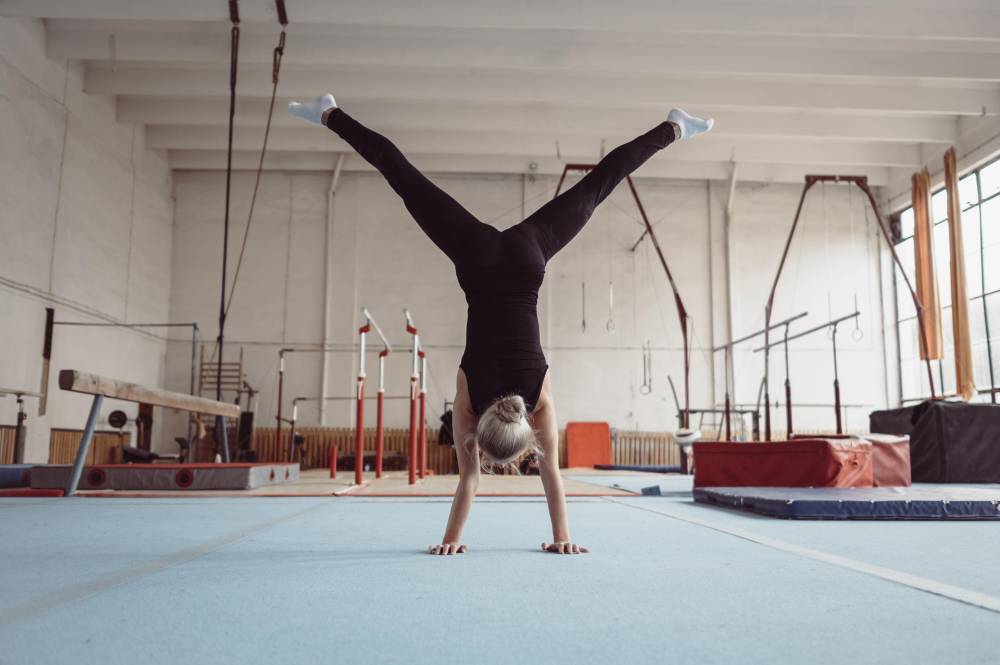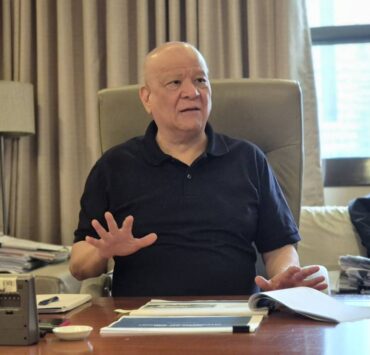It’s never too late: Try recreational adult gymnastics
- ‘It’s about overcoming your self-limiting beliefs and trusting in what your body can do!’

While training for competitive gymnastics typically starts at a young age, such as 7 for Paris 2024 Olympics double gold medalist Carlos Yulo, trying out recreational gymnastics is doable even in adulthood. It offers the same health benefits as any fitness activity for adults, but with extra emphasis on combining strength and flexibility.
Nach Saatchi, a marketing head in a retail company and an entrepreneur who describes herself as a “millennial with the energy of a Gen Alpha,” is a case in point. “As a kid, I wasn’t into sports,” she tells Lifestyle in an email interview. “I only ever got interested in trying out different physical activities after years of practicing yoga. I tried climbing and calisthenics, and then I joined a friend in an adult gymnastics class in Club Gymnastica in 2017. I was immediately hooked! I love the strength and conditioning in gymnastics and learning the skills I never dreamed of trying when I was younger!”
Seven years later, Saatchi says she still gets excited attending her gymnastics classes, which she usually takes one-on-one with her coach John Haylo in a private school’s gym, noting that “sometimes he includes me in a small group training of ex-gymnasts.”
She adds, “I look forward to the hours of conditioning, cardio and skill work that comes with every session. Gymnastics has opened up so many different possibilities! I’ve since learned aerial arts, joined obstacle course races and even dance classes.”
She goes on to share what she loves most about her chosen sport: “Gymnastics challenges me and pushes me to try skills that I might sometimes find scary or too difficult, at first. It’s about overcoming your self-limiting beliefs and trusting in what your body can do! Yes, you have to understand how to move your body in space, but that will only get you as far. A lot of it is really about believing that you can do it!”
Her advice to those who are interested in gymnastics but feel too old for it: “You’re really only as old as you feel and it’s never too late to try something new! My coach had students who were in their 60s and still tumbling and doing handstands! All the jumping and tumbling really keeps you young!”
Doctor’s precaution
Saatchi also has tips when attending a gymnastics class for the first time: “Don’t be scared and think that you’ll be doing advanced skills on your first few sessions. The first sessions are all about getting stronger and learning the basics. You’ll be surprised eventually at what you can do. Ask your coach questions, but don’t nitpick and miss out on trying to learn the movement by doing. Don’t be afraid to try!
”Before signing up for your first class in gymnastics, or any strenuous type of exercise, there are safety measures to consider, says Maria Leila M. Doquenia, PTRP, MD, FPNA. The specialist in adult neurology, movement disorders and clinical neurophysiology tells us that adults, particularly those above 35 years old, should undergo a medical exam to assess cardiovascular health, musculoskeletal integrity and overall fitness. This is a must, especially for those with preexisting medical conditions or who have been inactive for awhile.
“Any past injuries, particularly to the shoulders, back and joints, should be evaluated,” she points out, “as these areas are often stressed in gymnastics and aerial arts. It is crucial that gymnastic exercises are be tailored to accommodate past injuries.”
Dr. Doquenia, who’s also a licensed physical therapist, adds that bone density should be assessed, especially in older adults, to prevent fractures. She explains, “Activities that involve impact or stress on the skeleton should be monitored. Initial training should build cardiovascular endurance gradually as adequate cardiovascular fitness is essential to cope with the aerobic demands of gymnastics and aerial activities.”
Additionally, “Ensure proper nutrition to support the increased physical activity, including adequate protein intake for muscle repair and carbohydrates for energy,” says the doctor who holds clinic at ActivAITtPH (located at the University Hotel in UP Diliman, Quezon City) and the Center for Neurodiagnostic and Therapeutic Services of Metropolitan Medical Center in Sta. Cruz, Manila.
Where and how much
Club Gymnastica, which has been training young gymnasts since 1981, accepts adult students of any age, according to general manager Venus Talingting. Adult students take one-on-one lessons with an affiliated coach, as group classes are currently not available. But they can form a group to avail of the group package of 12 sessions for P11,000.
For individual lessons, the rate is P1,500 per session. If you pay the annual membership of P1,500, the rate is reduced to P1,200 per session. You can negotiate the schedule with your coach within the club’s operating hours. The branches in Pasig City and Makati City, where classes for adults take place, are open until 8 p.m. on weekdays and 5 p.m. on weekends.
Talingting tells us that while adult students don’t usually go on to participating in gymnastics competitions, they achieve their goal of becoming stronger and more flexible. Some of them excel in allied fields, such as pole dance and aerial arts, just like “Pilipinas Got Talent 2018” winner Kristel de Catalina.

















